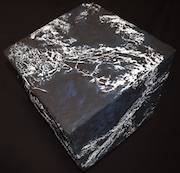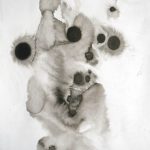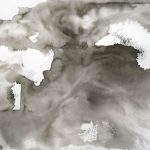QUESTIONS:
1) Coming from the approach of making your own synths at an early age, precisely how, when and why did you get started with modular synths?
I started as a music fan, discovering progressive rock and European electronic music around 1974-75, when I was in 6-7th grade. I would buy any record I could find with synths listed on the sleeve, and that led me to discover Kraftwerk, Vangelis, Egg Records, Brain Records, Tangerine Dream etc. On the back cover of a Synergy album, Larry Fast put a contact address, so I wrote him for more information. In return I got a free copy to Polyphony Magazine, which was full of ads for Paia synthesizers. I could afford those kits – they were cheap. I began building kits in hopes of having a huge rig someday, so I could make this music I loved. The only problem was, they were horrible synths. That led to a whole world of discovery, trying to make interesting music out of almost useless electronics. I made up a whole language of insect noises and frog chirping, while making most of the more musical sounds with a cheap lap steel guitar or homemade flutes, tape echo and spring reverb.
2) How can modular systems be particularly suited for producing ambient music? (any examples of favorite techniques?)
First of all I must say that I never thought in terms of musical categories like “ambient”, or trying to make a certain style of music. It was often a struggle to make anything that sounded musical, so much of my own personal “style” just grew out of limited abilities. To offer tips for others, though, I would propose that it helps to start by avoiding the idea of a “standard patch” with a keyboard triggering an envelope, and voltages to an oscillator through a filter and VCA. The most interesting evolving sounds can start in very different ways, with cross modulation for example, even skipping the VCA and making drones with almost anything through a resonating filter. You can make modulation feedback loops, audio rate modulation, all sorts of out-of-the-box approaches. Then, an important element also includes processing: pitch and time effects, delays, reverbs… thinking of the synthesizer as one component in a whole system. The whole studio is the instrument, and that can include guitar pedals, mechanical resonators, microphones, magnets, anything.
3) In fluctuating between improvisation and composition, how does using a modular affect your creative processes and results?
Often the seeds for ideas come from playing in the sonic sandbox. It is easy to get stuck, creatively speaking, and one way to get unstuck is to remind ourselves of the idea of play, experimenting, letting things go wrong or sound crazy. The real-time patchable quality of modulars means that magic moments can vanish if we don’t document them. This means keeping an audio recorder ready nearby at all times. The trick is to record the process, the messy bits, the accidents, instead of waiting for some fictional future time when you plan to get it all “perfect” (like recording Midi notes and deciding on the sounds later – that’s a trap!) Sometimes I’ll dribble away hours of noise into the computer, but follow that with a rather harsh disposal period, where I delete files or large sections of time that don’t offer anything useable. I try not to be too precious or protective about anything, but looking for moments of quirky magic.
4) How did your modular system become what it is now – considerations, purpose, etc.? (Is it still configured as a four-voice system?)
It’s a big sprawling mess that always seems to change. It is not a fixed entity with some plan or concept. It grows organically, when some module comes around that does something new, or some person asks me to try something, or beta test. I move modules around often, when I find myself wanting some things closer together. I don’t think in terms of standard voices, except perhaps for the small portable rig I take on road tours. The big MOTM system has maybe a dozen oscillators, a dozen or more filters, 8 channels of Midi-CV. The Euro system has 4 channel Midi-CV but a big splatter of different modules. These days I am most focused on new digital hybrid modules that can make time-domain shifts, not just frequency, as I have plenty of good filters.
5) Can you briefly describe your favorite (3-5) types of modules and why they are your favorites?
I need at least a few really accurate oscillators, and the recent Synthesis Technology e370 offers a huge range of choices, but oddly I find it almost too much. I find myself using the MOTM 330 oscillators the most, perhaps, because they have such a sharp PWM sound. A selection of really good filters is essential. My two favorite are the Synth-Tech 440 and the Old Crow 480. Between those two I have almost any filter sound I need except maybe formants. Beyond those, I am looking mostly at things that give me delays, spectral freezing, warping in new ways. The 4MS Resonator and Intellijell Rainmaker help me get way outside the normal realm of analog. I should also mention the importance of a very good mixer-VCA, and the small Russian label L1 is making my favorite in Euro format right now. These are high-headroom, low noise, excellent sounding dynamics processors.
6) You’ve been in favor of combining analog and digital approaches/techniques in Eurorack modules – can you elaborate a bit on that?
I have been asking for this hybrid approach since before it was possible, and I embrace it. We need to look at modular synthesizers as an ergonomic environment, not as a specific method of synthesis. The idea of knobs and patch cords, interchangeable functional units, physicality, open experimental flexibility – that’s what defines modular synthesis. It doesn’t have to sound like a Moog 55. I have no interest in historical accuracy. I want to make new sounds and new music with those sounds. Considering that so many modern Euro format modules are digital inside regardless – even if they look “analog” on the faceplate – it seems obvious to introduce the sort of processing that digital does best – delay taps, pitch shifting, FFT, sampling, spectral synthesis, granular, reverb, etc. The important point is that the modules need to stay simple enough to use without reading a manual, easy to bend and repurpose, one-knob-per-function if possible. Designers need to avoid the temptation to add layers and layers of features into a menu-driven model, but instead make more affordable, simple modules with a careful and limited choice of weird flexible functions. The hardest part is deciding what to leave off.
7) What do you consider when adding a new module to the system(s)?
Usually I just discover that something is available that fills a niche that nothing else fills in my system. Sometimes people just call me up and ask if I want to try something, then if I like it I’ll buy one. I usually try not to add things to the system, because it’s too big already, but these things have a way of multiplying. I think they are breeding when I close the studio door. That’s why the cables always get tangled, right? Truly, an overly large system becomes a deterrent to creativity.
8) What is more important to you in a module: immediacy, or depth? When will you make exceptions in either direction?
Immediacy with a special sort of flexibility – is that evading the question? What I mean is, I don’t want a bunch of deeply menu-driven modules with hidden functions and mode shifts. I don’t want an infinite number of configurations, or to remember that an LED is green in Mode 1, red in Mode 2, flashing blue when preparing to erase all my work. I love modules that do a thing really well, and in a way that lets me push them outside of their usual operating expectations. I want them to “break” in a musically interesting way. I consider that “abuse-ability” factor to be the true hidden depth. An endless list of features is more like “width” than “depth” perhaps. I don’t want do-all modules, I want do-cool modules. Usually that involves having just enough of the right sort of features to let me stretch its application.
9) What is your typical use scenario for your modular system(s)?
Varied uses. 1) For pure idea-generation, playing around with complex self-generating patches, feedback loops, random triggers, just trying to find some interesting new accidents to use. 2) For recording parts, when I want the best fidelity and most dynamic synthesis for certain types of arpeggio or bass sounds, where the excellent filters and signal path help the recording come to life. In these cases I usually send Midi tracks out from the computer, sync’d and looped back into a DAW. 3) Live performance with a smaller portable system, with Midi coming out of Ableton, giving me a “living breathing” palette of notes to play with.
10) You’ve been using both MOTM and Eurorack systems – what do you consider pros/cons in both cases?
MOTM is definitely the highest sound quality, and has an audio fidelity that I can’t match elsewhere. Also I prefer the larger format for navigating and knob turning. The problem is that the MOTM format is no longer moving forward (it was always a minority) and the new developments are happening in Eurorack. I focus on the Euro when I want to take advantage of more digital hybrid synthesis, some of the latest modules. Also I use Euro if I want a modular for playing live, because it’s smaller, more portable. The best thing is that they are not mutually exclusive. The two systems are next to each other in my studio and work well together, so I am usually patching back and forth. I can get the best of both worlds.
11) When you perform live, how much is pre-planning, versus improvisation – also, when using Ableton Live in conjunction with the modular? (As I understand, the connection between physical interaction and sound is important to you?)
In concert, it definitely helps when the audience sees a correlation between the performer’s actions and the sounds coming from the PA system A certain disconnect develops if the sound gets too far beyond the physical action, although that disconnect is common in electronic music. It helps to be very honest with the audience when using backing tracks, as listeners are sophisticated these days. That balance changes from concert to concert, piece to piece. Even my most “composed” pieces use improvisation as a major part – at least the melody lines, which I play differently every time. It’s a bit like Indian raga, where the basic form is laid out but the exact realization allows a lot of leeway. Certain pieces rely heavily on the modular for structural and melodic components, like an old piece “The Other Side of Twilight” which I play on live electronics with some Midi control from Ableton. Other times, I use Ableton to send out fast voltage patterns to create shimmering textures that I can weave underneath transitions, or to create random scribbling voltage that I can use to improvise in a more organic and wild way, during surreal interludes, such as when I play “Nesting on Cliffsides”. On the other extreme, if you look at the video for the KFJC radio concert (released as “Foothills”) you can see a completely improvised use of the Euro system, where clock dividers and pattern generators are making some of the texture and rhythm. Note that even in cases of pure improvisation, days of planning and practice go into making and using patches that allow a wide range of variation, so there is a lot of preparation that goes into any improvisation as well.
12) The size and complexity of a system can affect the range of sounds you can get out of it. Do you prefer to have a larger system for a wider range of possibilities, a smaller system that limits and focuses your options, or have you found a path between those two directions?
If a system is too large, I find that it leads toward habitual practices and can stagnate the imagination. People get too obsessed and addicted to collecting gear. I think a mid-sized system is best, maybe 20 modules with a wide variety of functions, some classic, some crazy. People try too hard to make the perfect dream-system only to get boxed into a corner of preconceptions. The scene keeps changing, new modules keep getting invented. I think it’s best to let a system grow slowly and organically, and make the most of patching with the modules that one has at the moment. Just push everything to the limits, and make full use of external processing to extend the tonality. The music becomes more dynamic, more exciting when you have to reach outside of the comfort zone to make new sounds.
13) In addition to your modular system, you also use keyboard synths, guitar, acoustic instruments, found recordings, and voice in your work. When you are working on a piece, do you have thoughts on which instrument will perform which roll – like the sections of an orchestra – or is the process more sound-driven, such as “I want this timbre or feeling here – let’s try a few things and see what works”?
Your second choice is closest. The music always drives those decisions. Sometimes I end up finishing a piece without using the modular or analog synths at all. Some of my most useful sounds come from sampling, maybe starting with some acoustic drone into a looper to create a thick sound, sampling to the computer, creating an instrument on EXS24 in Logic… before I know what happened I am using that with some live percussion, a guitar or something. I don’t care if some instrument goes unused in an entire project. Limitations can help, even roping off a few favorite habits to force myself to do something different. Mostly, just listening to the sound in my head, and trying to discover the best way to make that sound real.
14) What would your advice be to newcomers and experienced users of modular?
For experienced users, I would suggest trying to break out of the established assumptions, such as a standard signal flow. Also, don’t try to unlock creativity by craving more gear. For beginners, I would ask why you are considering a modular synth in the first place. Is there something you really want to do artistically, that you cannot do with what you have? Don’t get seduced by the fad, or craft a wall of blinky lights just to impress people. If you really feel that it’s an instrument you want to grow with, start small and with the best quality output stage you can. A minimal system: Good stable oscillator, Midi>CV, good LP filter with resonance, some interesting modulation, ADSR envelope and a mixing VCA. Buy a bigger case than you think you need, with a really good power supply. Let half of it sit empty while you use those few modules and grow slowly from there. It might take a year of slow growth before you start developing a sense of what you love or dislike. It will get much more expensive than you imagined.
15) What are some of your favorite 3-5 patching techniques/tips? (In addition to using some of these in the book, we are considering creating an “Oblique Strategies” card deck with suggestions for modular users, and may ask your permission later to use some of your suggestions for this.)
a) Feedback Loops: Split the output somewhere near the end of a patch, and put half of it through some external delays, guitar pedals, etc, then patch back into the start of the patch at a mix point (maybe into a filter.) Increase the extra input until it almost feeds back, and explore the balance points (pitch modulation in the delay helps here to keep it from exploding.)
b) Resonant filters as oscillators: Put a filter into almost-full resonance, and put a DC trigger pulse into the audio input, causing it to ping. The resonance controls the decay time. Overdubbing a bank of these makes a lovely “raindrop gamelan.”
c) Audio frequency modulation: start with sine or triangle waves as a modulation source, and try everything as a destination. 1 KHz modulation into PWM gives a growl like a popped bass string; 3 kHz into the FM of a filter can impart a complex vocal formant that sounds like scratchy vocal chords; put noise through that filter and it sounds like SCUBA breathing. You get the idea. This works best with pure analog, as many digital modules can’t modulate that fast.
d) Ultra-sonic difference tones: do you have two analog oscillators than can extend beyond hearing range? Set them both above your hearing. Put a slow random voltage into each to keep them moving slightly. Put the sine or triangle output of one into the FM of the other, and then the sin/tri of the other back into the FM input of the first. Put one or both oscillators’ additional waveform outputs into a LP filter for tone control. Start with full attenuation of FM input, then slowly increase cross-modulation. You should hear some insane radio-tuner like sounds, sometimes full on chaos. Harmonic relationships become very interesting. Your mileage may vary.






You must be logged in to post a comment.